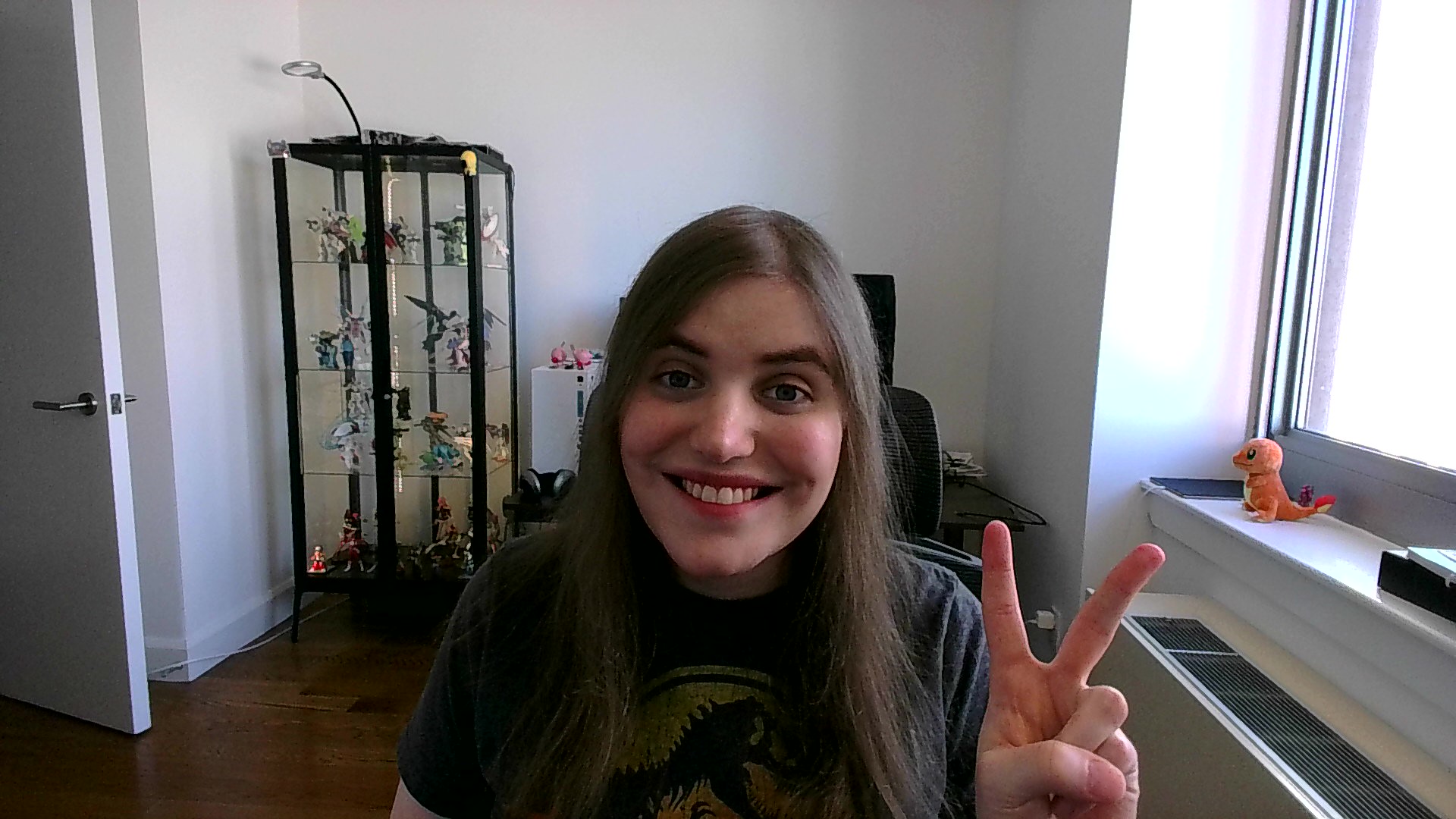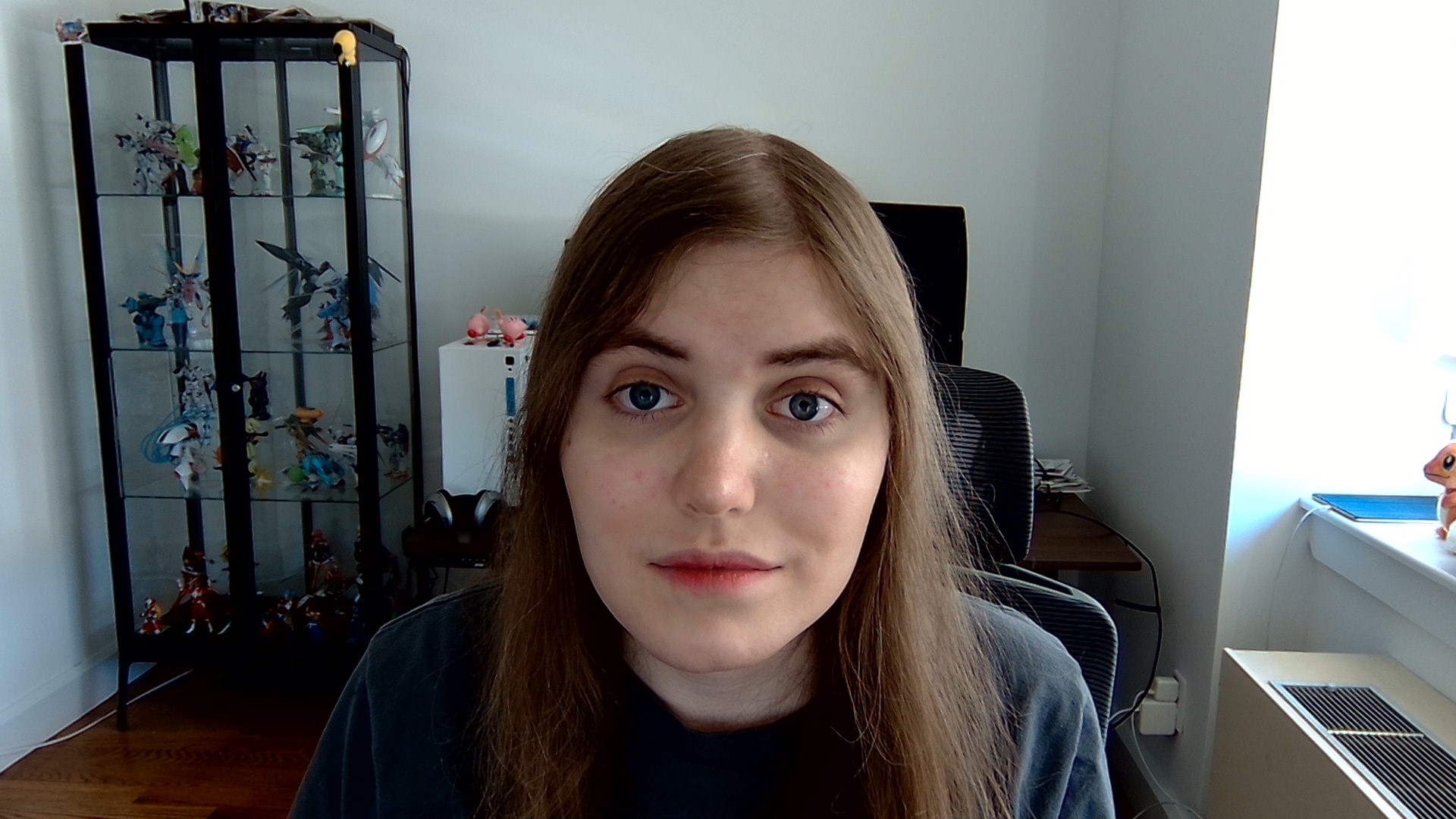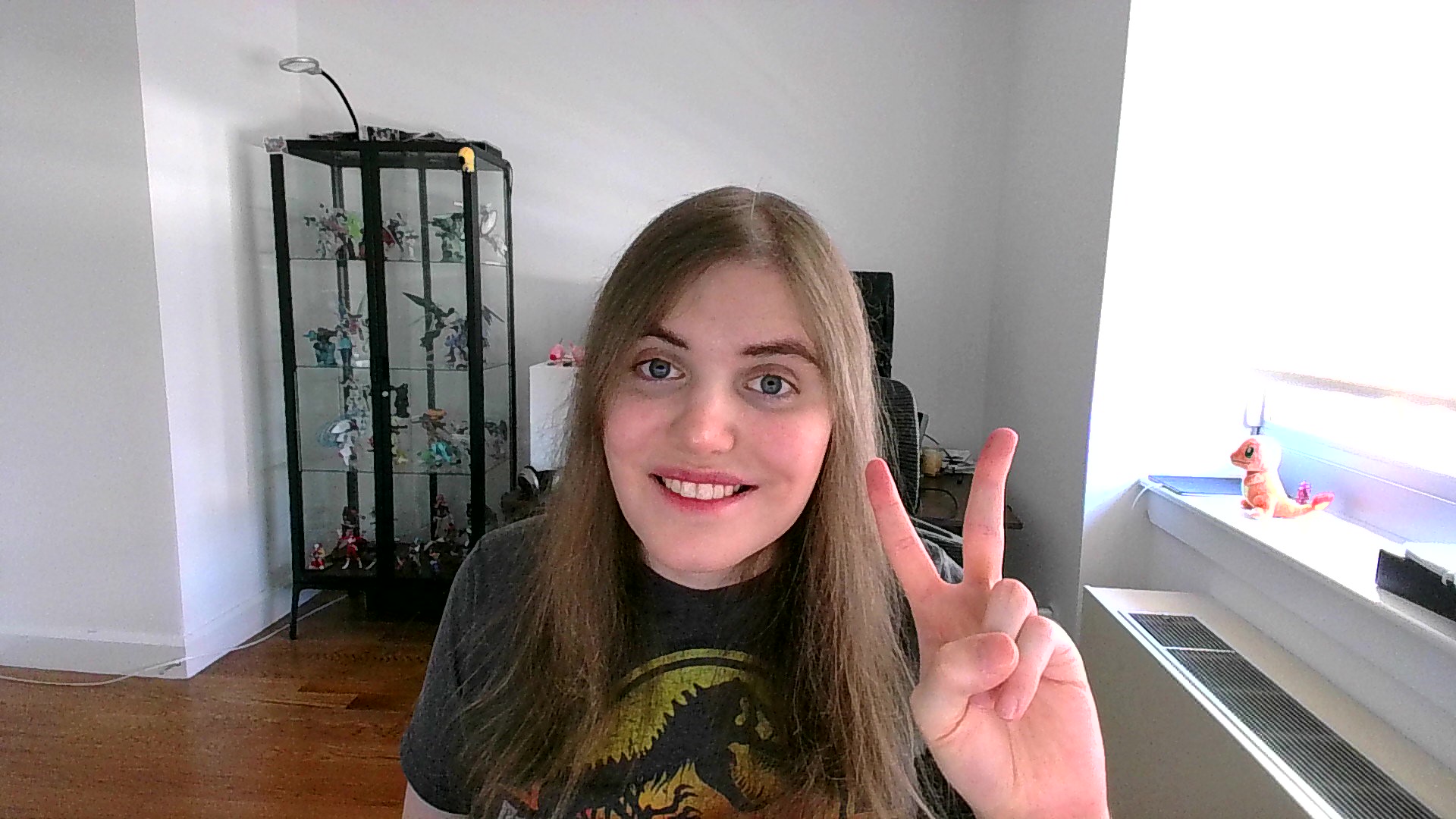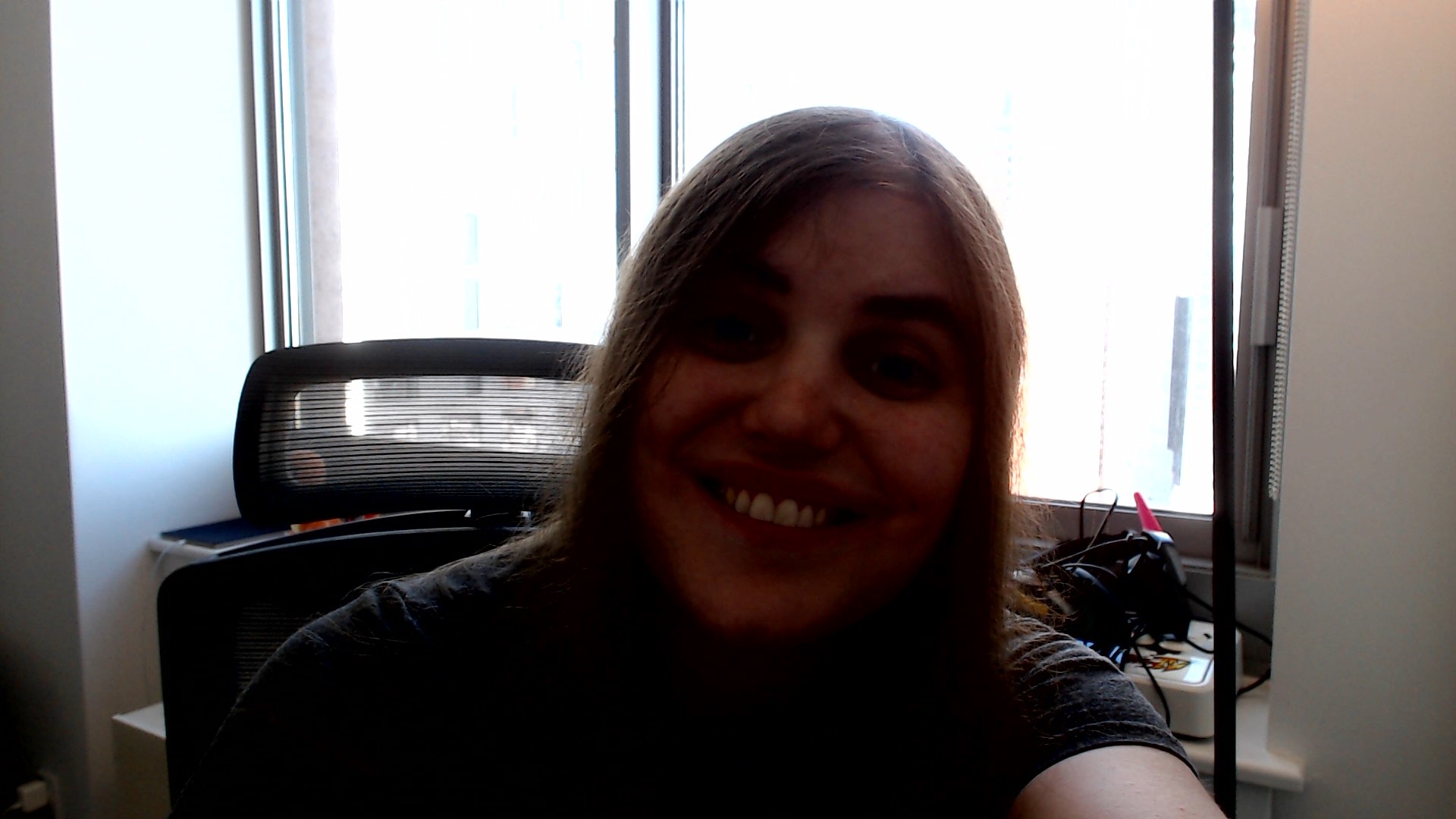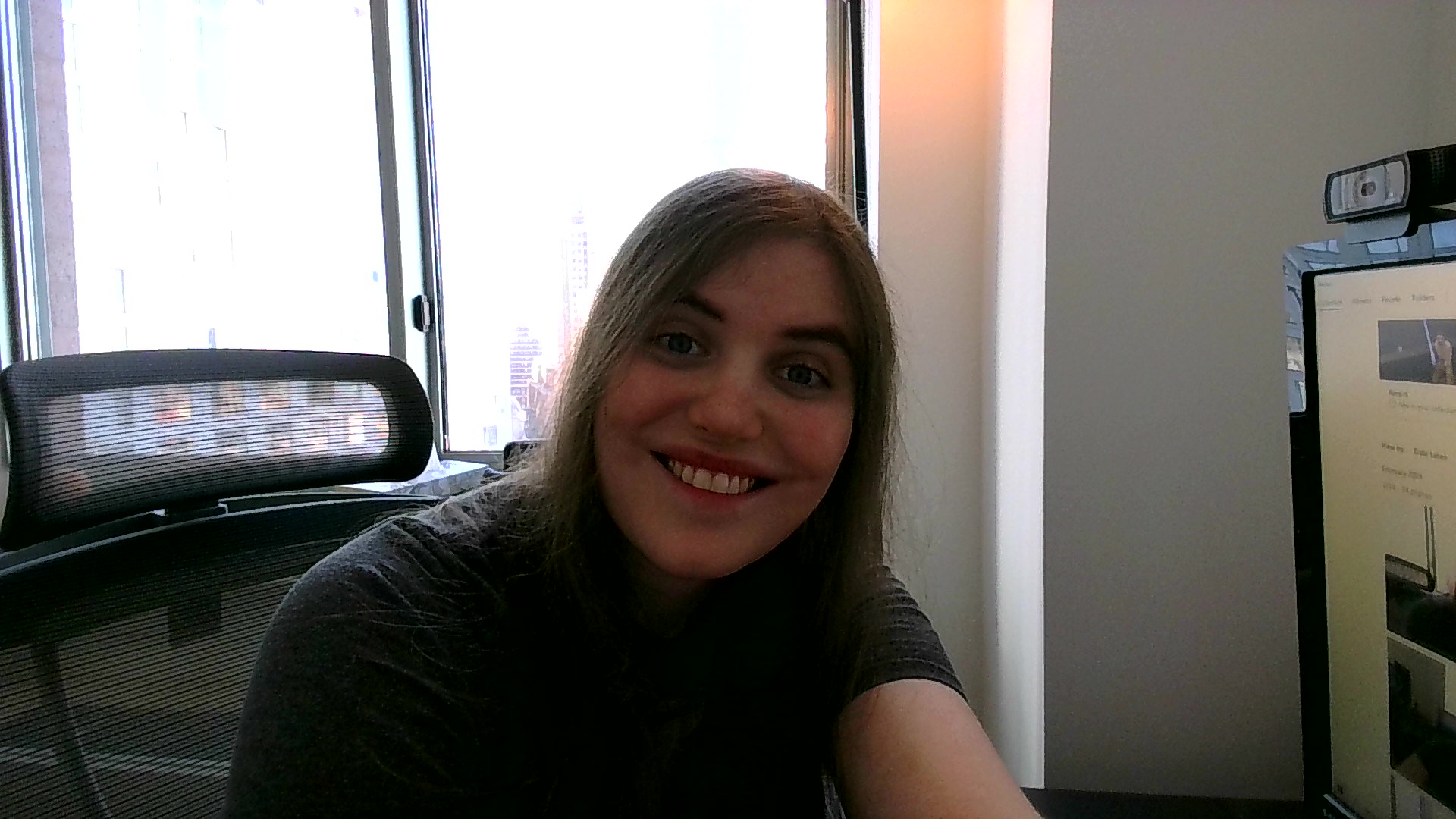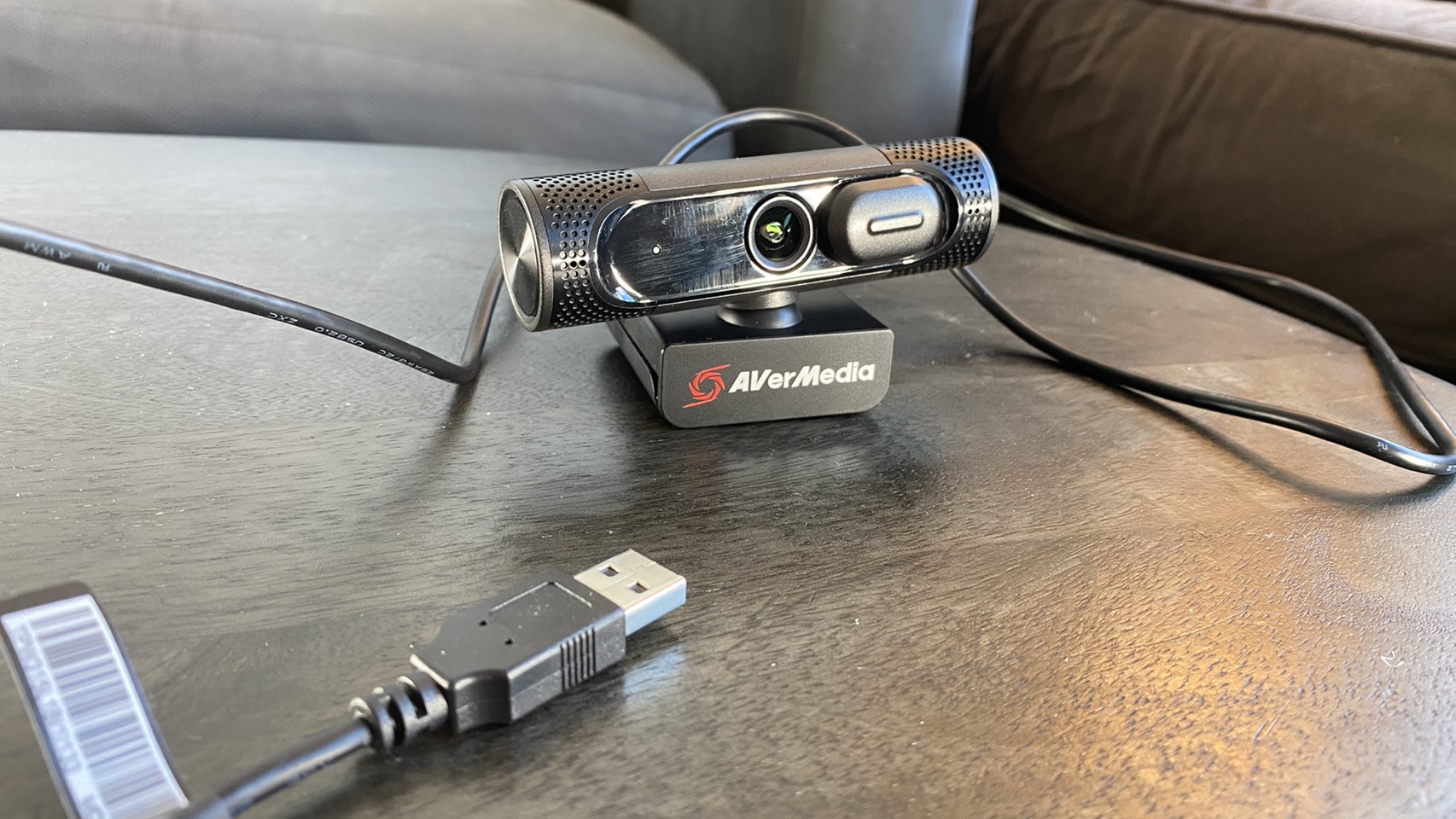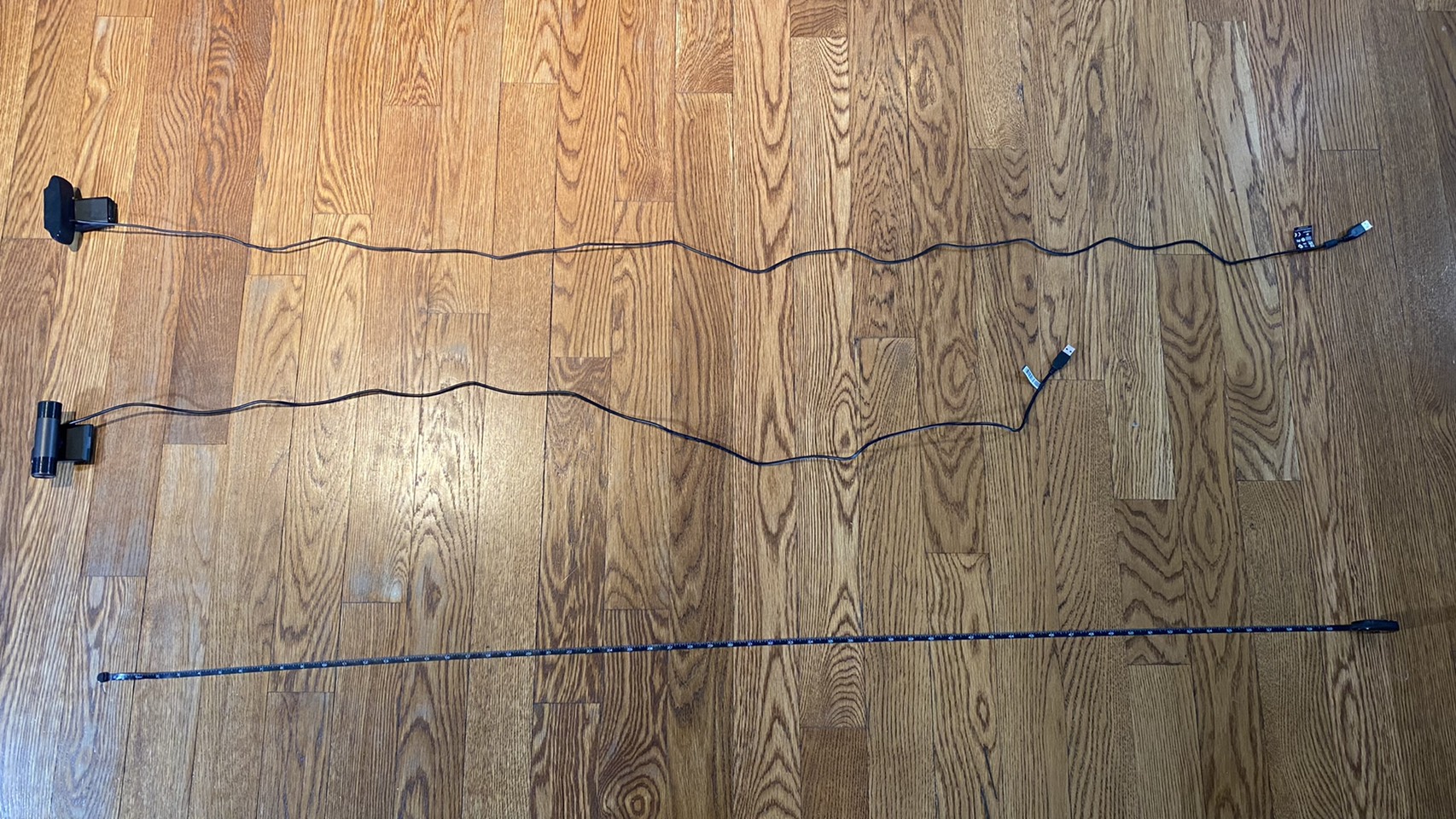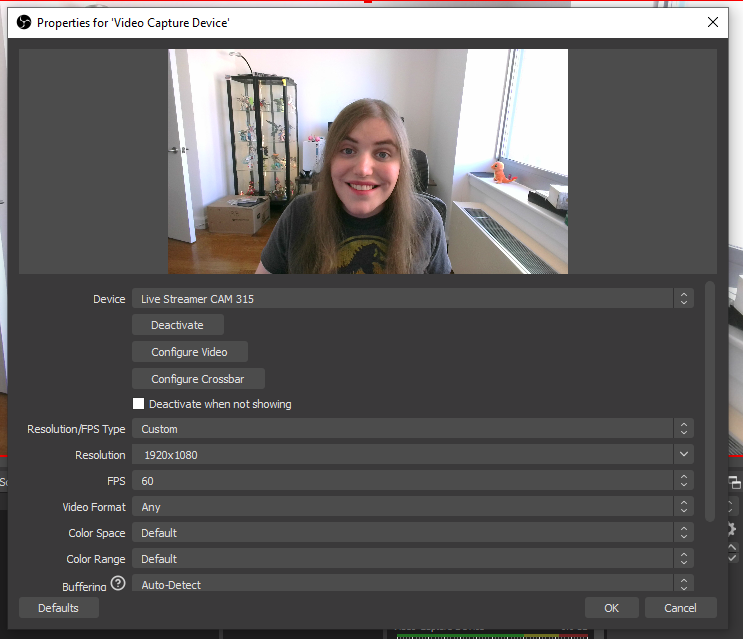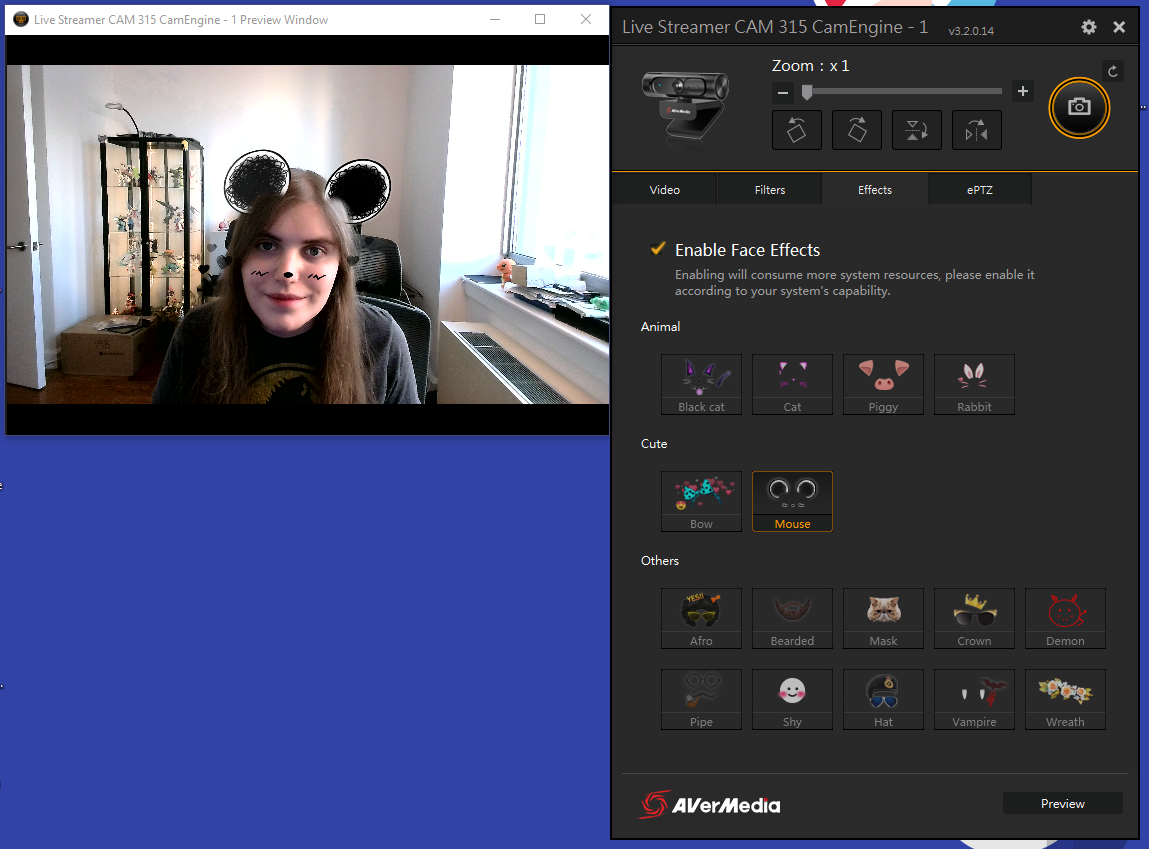Tom's Hardware Verdict
The AverMedia PW315 is too expensive for casual use, and while it works well in low light and too much light, it’s not that much cheaper than other, higher quality 60 fps webcams.
Pros
- +
Operates well in all kinds of lighting
- +
1080p @ 60 fps recording
- +
Customizable through software
Cons
- -
Grainy, pixelated images
- -
Tinny microphone
- -
Image quality looks worse than cheaper alternatives
Why you can trust Tom's Hardware
Webcams that can capture footage at 1080p and 60 frames per second can be expensive, like the $170 Logitech StreamCam or $200 Razer Kiyo Pro. There’s good reason for that, since 60 fps is a niche feature that’s best paired alongside video game footage. Unless you’re a game streamer, you probably won’t need it. But game streaming is also getting more accessible than ever from a technical standpoint, which is why budget 60 fps cameras like AverMedia’s new PW315 webcam are so enticing.
Coming in at $119, the AverMedia is still more expensive than 30 fps alternatives, but it does veer much closer to casual-use cameras like the Logitech C920 than other, more professional-focused 60 fps options. It also works well across lighting scenarios and comes with some cute though only somewhat useful post processing software. However, the camera’s image quality seems to have taken a hit along with its price.
Well-Lit Room
Logitech C920
Razer Kiyo Pro
AverMedia PW315 Webcam
I tested the AverMedia PW315 in a well-lit room alongside both the $79 Logitech C920 and the $200 Razer Kiyo Pro, and it’s in this scenario where the camera disappointed me most. While its 95-degree lens captured more of my background than either competitor (and without the fish eye effect present on the Kiyo Pro’s wide angle options), the AverMedia was the only camera to show grain in my room’s standard, most optimal lighting conditions. While photos taken with it look OK shrunken down or from a distance, zooming in shows heavy pixelation, to such a degree that I’d forgive you for thinking you’re looking at a 720p picture.
That’s a shame, because the AverMedia webcam is also one of the few webcams I’ve tested to have almost perfect color accuracy out of the box. Unlike the C920, my skin doesn’t look cooler than usual, and unlike the Kiyo Pro, it doesn’t look warmer either. But then again, lower image quality tends to make everyone look better.
Get Tom's Hardware's best news and in-depth reviews, straight to your inbox.
Low Light Room
Logitech C920
Razer Kiyo Pro
AverMedia PW315 Webcam
I also tested the AverMedia PW315 in mid-day with my curtains drawn, my door shut and all artificial light sources turned off except for my monitor. The result? It looked better! Unlike the Logitech C920, which introduces some blur and takes a slight hit to image quality in low light, the AverMedia’s picture quality looks relatively unchanged. But in addition, my face looks brighter despite having fewer light sources, and colors look even more pleasing to the eye than before.
By contrast, the Razer Kiyo Pro presents a more true-to-life picture that better resembles what the light in my room actually looked like to my naked eyes when taking shots. Picture quality is still far ahead of either competitor, but if you want your dark rooms to look more well-lit than they actually are, the AverMedia seems to do that well.
It’s a shame that its grain persisted here, too.
Overexposed Room
Logitech C920 webcam
Razer Kiyo Pro Webcam
AverMedia PW315 Webcam
Finally, I tested the AverMedia PW315 in an overexposed room, where I pointed my camera directly at my window. I normally don’t expect accurate shots from this situation, and instead use it to see how well each camera responds to heavily lit situations. For instance, you can see some of the Kiyo Pro’s light sensor technology at work in its overexposed shot, as it shows more of the world outside my window than any other camera here, albeit at the expense of seeing my face..
The AverMedia shocked me, however, by being the only of the three cameras to accurately show my face in overexposed conditions. As with my low light photos, I arguably look better here. By contrast, I have so much shadow covering my face in the Logitech and Razer photos that I almost appear demonic.
Yes, the AverMedia’s grain is still present in these shots, but it doesn’t really matter. It was the only camera to give me anything usable in such heavy light.
Build Quality of the AverMedia PW315
The AverMedia PW315 has a thin, cylindrical design that feels lightweight and inexpensive but offers plenty of customizability when it comes to camera placement. The camera can tilt both up and down and swivel 360 degrees. There’s a hole on the bottom of its monitor mount to attach it to a tripod, and it fits snugly whether placing it on a monitor or a tripod. Its USB Type-A cord is 56.5 inches long, which also gave me plenty of room to attach it to either a front or rear port on my desktop.
The AverMedia PW315 also had a built-in sliding privacy shutter, plus dual microphones that tend to produce loud but tinny and echo-filled audio.
As with most webcams, there’s also an LED that lights up on the AverMedia PW315 when it’s recording.
Special Features on the AverMedia PW315
The AverMedia PW315 webcam is a color accurate webcam that’s resilient to both high and low light environments but suffers in quality more than I’d expect from its $119 price point. But special features is where this webcam makes its best argument for itself. Unlike most 60 fps webcams, which range from $50-80 more expensive than the AverMedia PW315, this camera can capture high frame rate footage on a budget.
And to the PW315’s credit, those claims held out in my testing. When I navigated to OBS, turned on 60 fps recording, and took a video, I could easily see the clear uptick in frame rate without even trying. The video also only took up 20 more MB on my hard drive than a normal 30 fps video, and the extra frames helped counterbalance the lack of image quality, since the camera’s footage tended to look best in motion.
The AverMedia PW315’s other special feature is compatibility with AverMedia’s CamEngine software. You can use CamEngine to adjust your photos’ brightness, gamma and other settings, though most of these functions are available in other software like OBS and produce similar results there as well.
But a facet of CamEngine that’s unique to the AverMedia PW315 is the ability to turn on AI framing, which attempts to follow you around as you move similar to the auto frame feature in Nvidia Broadcast. It’s an impressive utility, but I found it to be too slow and chunky for regular use. Slightly more useful is the ability to adjust the frame and zoom manually, although it’s possible to easily end up with negative space in your photos if you’re not careful.
CamEngine also has a number of cute, Snapchat-esque virtual masks you can place over your face. The face tracking works surprisingly well here, even following you when you turn your head to the side, although there’s no real reason to use this over Snapchat’s free and more versatile software.
Bottom Line
AverMedia’s well known for its capture cards, and with products like the AverMedia PW315, it’s clear that the company has ambitions of moving beyond components and into peripherals, though that’s a far more crowded space. It’s going to have to step up image quality if it wants to compete with the best webcams.
There are some unique positives to the AverMedia PW315. It’s one of the cheaper 1080p @ 60 fps webcams from a known manufacturer on the market, and it’s resilient to both low light and overexposed environments. Its software also gives it a touch more customizability than your typical webcam, although much of its usability is perfunctory.
But its images are also grainy and heavily pixelated. It’s a problem for a $119 camera to have such drastically lower quality than a $79 competitor, especially when its 60 fps selling point is so niche. If you’re looking for a good casual use webcam and are confident with your room’s lighting, you can do better for cheaper. Meanwhile, if you want to stream at 60 fps, it might be worth spending the extra $80 on something like the Razer Kiyo Pro or Logitech Brio 4K to give your audience a more pleasant viewing experience.
Michelle Ehrhardt is an editor at Tom's Hardware. She's been following tech since her family got a Gateway running Windows 95, and is now on her third custom-built system. Her work has been published in publications like Paste, The Atlantic, and Kill Screen, just to name a few. She also holds a master's degree in game design from NYU.
-
jojesa I have used $20 1080p @ 60 fps no-name webcams that performed just as well as that PW315 . So, are we paying $100 for the CamEngine ?Reply


